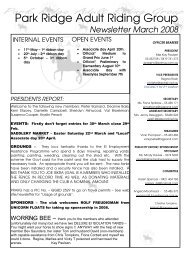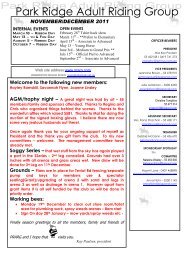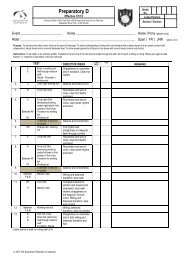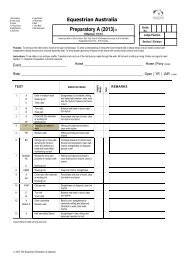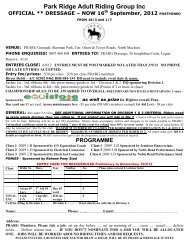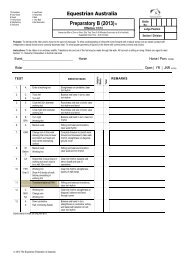You also want an ePaper? Increase the reach of your titles
YUMPU automatically turns print PDFs into web optimized ePapers that Google loves.
The Colic Fact Sheet<br />
WRITTEN BY: The Equine Research Centre<br />
What is Colic?<br />
The term "colic" means only "pain in the abdomen" or "pain in the belly".<br />
There are many causes for such pain, ranging from the mild and<br />
inconsequential to the life-threatening or fatal. One of the problems with<br />
equine colic is that it can be very difficult in the early stages to distinguish the<br />
mild from the potentially fatal. This is why all cases of abdominal pain should<br />
be taken seriously right from the onset.<br />
A tour of the gastro-intestinal tract<br />
A guided tour of the horse's gastro-intestinal tract (GIT or "guts") helps to<br />
explain why there are so many forms of colic. The horse's GIT is similar to<br />
that of most species but it has a number of specialised design features, some<br />
of which predispose it to colic. These are noted by an asterisk (*) below.<br />
Once food has been chewed, it passes down the esophagus ("gullet") into the<br />
stomach. The horse has a fairly small stomach for its size (8-15 litres), a<br />
design well suited to an animal which grazes almost continuously in its natural<br />
state. After a period of digestion in the stomach, food passes into the small<br />
intestine. This part of the gut is approximately 22 m in length, with a<br />
diameter of 7-10 cm, and a capacity of 40-50 litres. The majority of the small<br />
intestine hangs from a curtain-like membrane called the mesentery*. The<br />
messentery is attached to one point in the middle of the abdomen, under the<br />
spine. (The small intestine looks like a very long sausage running along the<br />
bottom of a thin net curtain, with the top of the curtain all bunched together.)<br />
At the junction of the small and large intestines the equine GIT has a large<br />
blind-ended* outpouching over 1 m long with a capacity of 25-30 litres. This<br />
is the caecum (the horse's version of our appendix). Food passes from the<br />
small intestine into the caecum before passing into the large intestine.<br />
Together, the caecum and large intestine form the horse's "fermentation<br />
chamber", allowing it to gain nutritional support from the complex<br />
carbohydrates contained in grasses and other forage. Three to 4 metres long<br />
with a diameter of 20-25 cm along most of its length and a capacity of over<br />
50 litres, the large intestine fills a significant part of the abdomen.<br />
Surprisingly, this large unwieldy structure is tethered to the body wall at only



